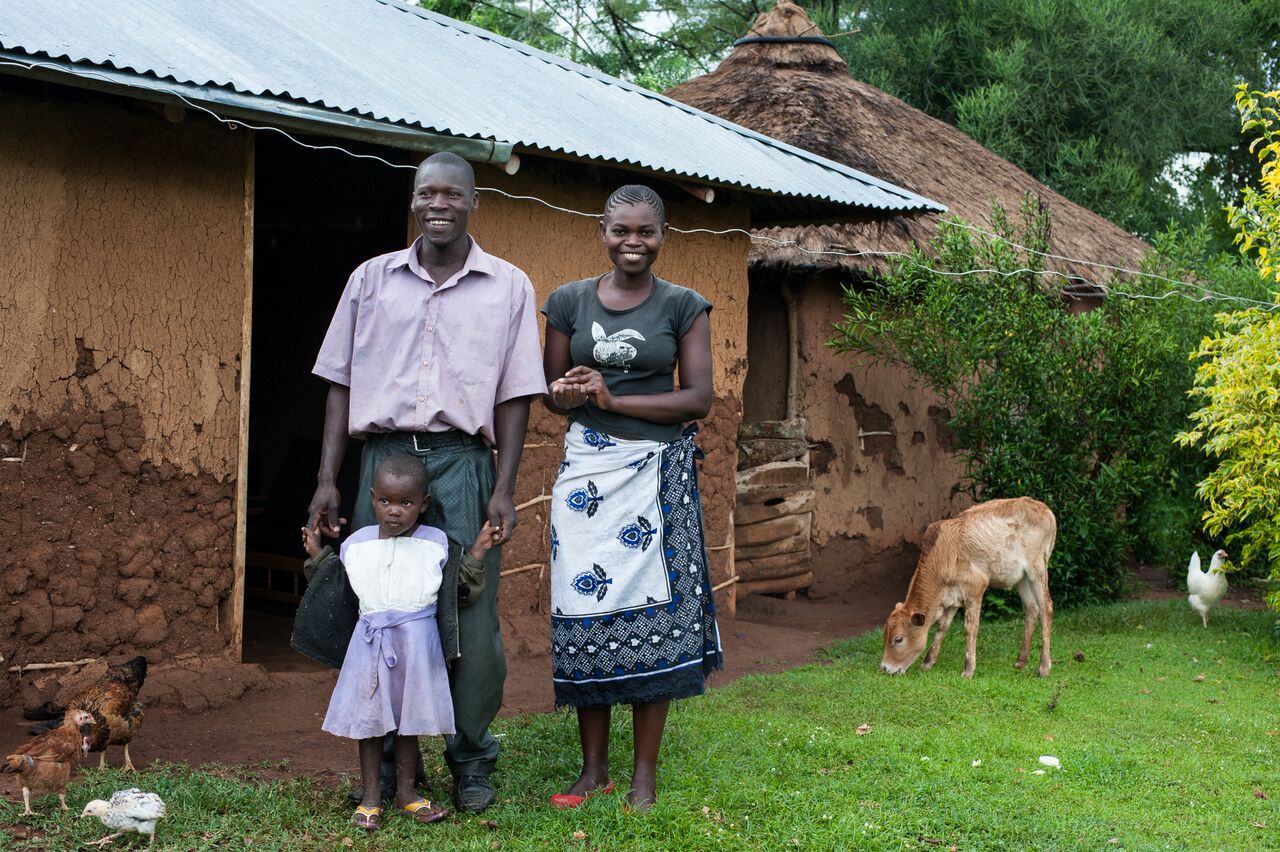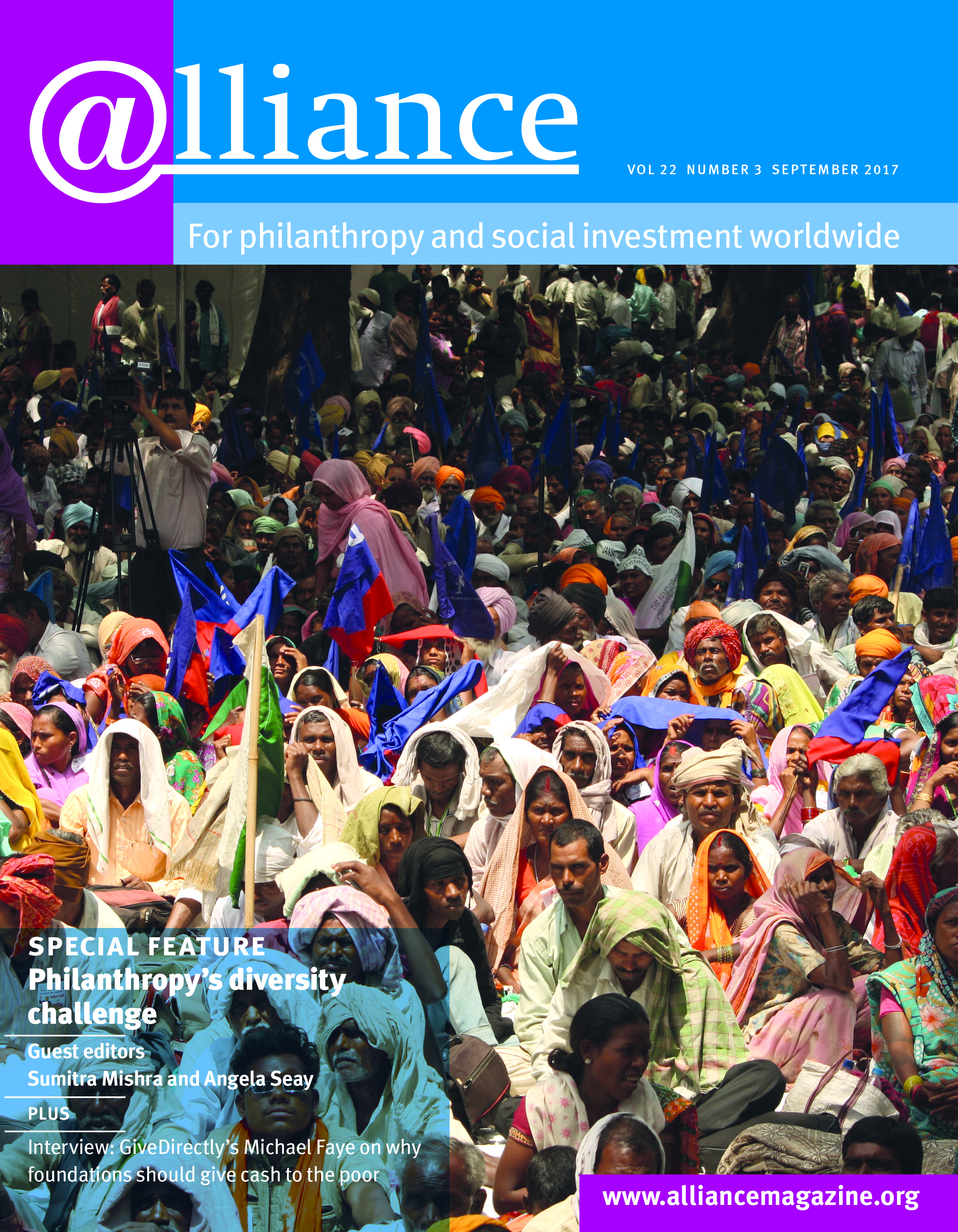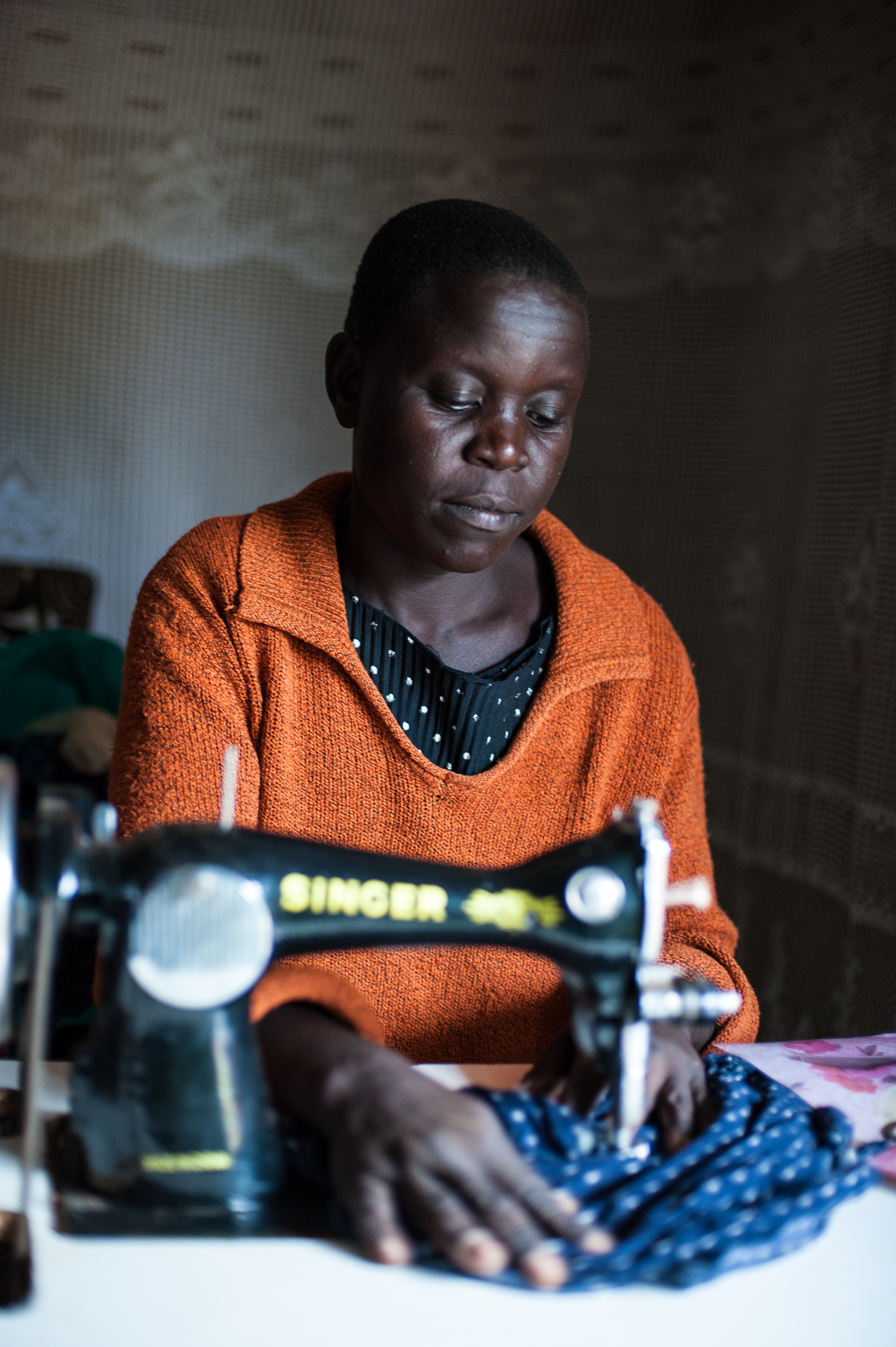Cash transfers account for less than 5 per cent of development aid, yet there is strong evidence to suggest that they are effective, borne out by the experience of GiveDirectly. Its co-founder, Michael Faye, tells Charles Keidan how the approach works, dispelling some of the myths surrounding cash transfers on the way. So why is philanthropy so reluctant to adopt cash transfers? After all, giving money away to help others is a big part of what it does.
What do you mean by cash transfers?
Cash transfers are a type of social programme in which capital is provided directly to poor people, allowing them to spend it on what they want.
It’s both remarkably intuitive, and yet feels deeply uncomfortable at first.
When you look closer though, there’s a large body of evidence that poor people are generally more effective at making their own spending decisions than others are at making them on their behalf. And no, they don’t waste it on booze or stop working.
In terms of the numbers, cash transfers are still a tiny portion of development spending; in the UK, it’s less than 2 per cent. And while the numbers haven’t changed dramatically, the rhetoric has – when we started, cash transfers were called nuts, the assumption often being that the poor were too dumb or too lazy to spend the cash well.
That’s changed pretty meaningfully, and recently, the former UN secretary general recommended that cash transfers be the default for humanitarian spending.
How did you get started in this area?
My first job after school was at the United Nations, where I’d often find myself at a conference discussing poverty, staying at a nice hotel with nice meals, and invariably someone would facetiously ask ‘what would happen if we spent the money directly on the poor instead of the conference?’ At the time, most of us assumed that cash transfers weren’t effective, and even if they were, how could we possibly implement them at scale?
That changed in the early 2000s. The field of international development started to use randomized trials to assess the effectiveness of different interventions. And we learned that cash transfers, which many assumed would not be effective, turned out to have one of the strongest evidence bases of any intervention.
At the same time, a second big change happened – the introduction and rise of mobile money. For the first time, we could make digital payments cheaply, securely and directly to the extreme poor. The confluence of these trends was the birth of GiveDirectly.
What percentage of aid do you think should be cash-based?
I don’t have an exact figure, but it’s certainly more than we currently do.
The analogy I think about is the index fund, which is basically a very low-cost, passive way to invest in the entire market. Active investors like hedge funds and private equity are now forced to compare their returns to those of the index funds, and justify that the expenses of active management are worth it.
Today, index funds are more than 25 per cent of the market, and have had an even bigger impact as a benchmark.
You can imagine cash transfers playing a similar role. Over time, the sector will hopefully increase the amount of funding for cash transfers, but the transformative impact will come when cash is the benchmark or index fund for the sector.
When the sector is forced to justify that it is doing more good for the poor, than the poor could do themselves.
What do you think has caused the change in rhetoric in favour of cash? Is it the growing body of research?
Evidence certainly helps but I think part of the change comes from an increased emphasis on listening to recipients, and we know across the board that recipients prefer cash. In addition, the changing rhetoric at the highest levels reflects increased public support for cash transfers.
If GiveDirectly had remained a marginal non-profit, and not one of the fastest growing organizations in the sector, I think the response would be quite different. The profile of cash is rising, support among donors is growing, and therefore a number of organizations are having discussions about what this implies for them and the future of philanthropy.
The transformative impact will come when cash is the benchmark or index fund for the sector.
It’s large, positive and often sustained over time. But the specific impact really depends on the context. For example, in South Africa where the cash transfer programme was an old age pension, we saw impacts on children’s nutrition.
In Malawi, where the transfers were targeted to young single women in an area of high sex work, the impact was on HIV and other STD prevalence. In other words, people’s use of the money varies based on context, and will even vary within a small village.
That’s the power of cash – it puts the choice into the hands of the individual poor and lets them meet their specific needs.
You are also testing different approaches to using cash?
Yes, we’re constantly testing what works best. For all that we know about the overall effectiveness of cash, we know much less about the relative impacts of different programmes – whether it’s how different amounts, targeting criteria or transfer timing affect the impact.

Poor people are generally more effective at making their own spending decisions than others are at making them on their behalf.
We’ve already done research comparing the impact of one big chunk of money versus several smaller ones, and whether men use money differently than women.
We are now just launching a project to understand the impact of universal basic income – an untargeted cash transfer providing smaller cash transfers over a long period of time.
Are there possible unintended consequences of giving cash and how do you deal with them?
The idea of providing cash, no strings attached, automatically provokes a lot of questions. How do we know that there was no fraud? How do we know the intended recipient was the actual recipient? How do we know that the programme didn’t provoke unrest?
These are all great questions. We should be asking them about all programmes, not just cash. And yes, we do see some degree of fraud, we see some arguments. I would never trust a programme that claimed never to have fraud or the occasional dispute.
At GiveDirectly, we go to extreme lengths not just to uncover issues with multiple follow-ups and recipient satisfaction surveys, but to also publicize them and give our donors as honest an assessment as possible.
That’s the power of cash – it puts the choice into the hands of the individual poor and lets them meet their specific needs.
What has motivated you to take a more transparent position?
We built GiveDirectly as a way to distribute our own money to the extreme poor, and naturally wanted transparency in this process.
If it wasn’t working or money was leaking, we wanted to know, either to fix the process or stop it. And we’ve always wanted to treat our donors with the same respect that we would want for ourselves.
Because we’ve taken that stance from the beginning, we’ve been fortunate to attract a donor base that appreciates it – and even demands it.
That provides a luxury that not all organizations have. I do hope that the support for GiveDirectly and other transparent, evidence-based organizations will help encourage others to follow suit.
In your work on basic income, how do you choose which villages to intervene in? Because that means, ultimately, you’re deciding who is going to be lifted out of poverty?
That targeting challenge is one that faces anyone who can’t solve worldwide poverty tomorrow. And it’s an important one – since we can’t provide a basic income to every village in Kenya, we need to make a targeting choice. We’ve done this by using census and other poverty data to identify the poorest villages.
Who are your existing donors?
The people that like GiveDirectly tend to be quantitative, naturally sceptical and focused on the evidence. They’re also generally compelled by the idea of conferring choice and agency to individuals.
Some of your donors are in California’s Silicon Valley and they probably do have the ability to give you the resources that would allow you to cover all those villages in Kenya. So if they care about poverty as much as they care about evidence, why wouldn’t they just give you more money?
Brookings actually did a very crude estimate of what it would take to get everybody in the world above the poverty line – about $70 billion a year. Our existing donors, as generous as they are, probably couldn’t get us to $70 billion.
That said, we spend about $135 billion on official development assistance every year, or double what it would take. There’s something encouraging about that comparison – this is a problem we could conceivably solve. But a lot needs to change about how our current social welfare and aid budgets are designed.
The people that like GiveDirectly tend to be quantitative, naturally sceptical and focused on the evidence. They’re also generally compelled by the idea of conferring choice and agency to individuals.
So we don’t need more money, just to use it in a different way?
I think there’s a danger of setting up a false dichotomy – more vs better. I think the reality is that both would do good.
Do you compare how effectively people are using cash transfers?
It’s a complicated question as it’s hard for any outsider to say whether one person’s use of cash is more effective than another’s. How should I judge whether it’s more effective to send one child to school or treat another’s illness?
 So while we spend a lot of time understanding the impact of the cash transfer, we reserve judgment on which uses are the most effective.
So while we spend a lot of time understanding the impact of the cash transfer, we reserve judgment on which uses are the most effective.
Interestingly, we learned from our first randomized trial that the poorest tend to spend the transfer on food for the children, while the slightly wealthier seem more likely to invest. I personally think both are pretty important.
What does your experience teach us about the way cash transfers are used? Are there insights for basic income experiments outside the developing world?
I think some lessons from these projects will certainly be universal. It also wouldn’t be the first time that the developed world draws upon cash transfer learnings from the emerging markets.
New York City introduced a conditional cash transfer programme called Opportunity NYC in 2006, built upon the learnings of a similar programme called Oportunidades in Mexico.
Why do you think philanthropy hasn’t really embraced cash transfers?
Cash transfers are still a relatively new idea, and we’re already seeing meaningful support from several large foundations – Good Ventures, Google.org and the Omidyar Network – and several other family foundations like the Ray and Tye Noorda Foundation and Unorthodox Philanthropy.
The Gates Foundation has also funded some of the most important cash transfer research in the world, and is helping advance the payments ecosystem to make cash transfers possible and cheaper.
But you’re right that traditional philanthropy hasn’t broadly embraced cash transfers and I think there a few reasons.
The first is that philanthropy is challenging if you don’t limit the spectrum of funding opportunities; as a result, most foundations have picked a sector or a location to focus on. Once you’ve done that, it’s very hard to fit cash into that structure.
The structure itself is in tension with the cross-cutting nature of cash. The second challenge is that cash puts much of the decision-making into the hands of the poor and not the programme officer. There’s a natural tension there as well.
It’s hard for any outsider to say whether one person’s use of cash is more effective than another’s.
So the intermediation of professionals, of NGOs, is actually a barrier to streamlining?
There’s a chain, from governments to international agencies, to country offices, to local NGOs, which fund, design and implement programmes. As you move through that process there’s less and less freedom in decision-making, and less and less money available.
 There’s still a need for NGOs in a world where cash transfers are the dominant form of giving. Somebody needs to identify the poor, make the transfers and monitor the programme.
There’s still a need for NGOs in a world where cash transfers are the dominant form of giving. Somebody needs to identify the poor, make the transfers and monitor the programme.
But I’m arguing that we should spend less time and money on guesswork about what the poor need and just let them make the decisions themselves.
How can we change that?
I think smart, discerning customers lead to smart products. To get change in the social sector, we need the public to ask tough questions and give accordingly. In the private sector, if you’re not satisfied with last year’s product, the company has an incentive to innovate.
If you, the donor, are not satisfied with the opacity, layers of intermediaries, and high cost of the existing system, the system will have to evolve, because you, the donor, are the customer.
What would your advice be to foundations and philanthropists concerned about extreme poverty?
One thing would be to explore your own biases. We all have them. I certainly did. I would never have thought that giving money to poor people would be an effective way of fighting poverty. Ask why you yourself would prefer cash to food stamps, but assume differently of the poor.
Ask why it feels natural to ask whether a poor person drank their money away, but that you’d never ask that to a friend who just received a birthday cheque.
The second thing I’d say is be a smart customer. Ask two basic questions: ‘If I give you a dollar, how much value do the poor receive at the end of the delivery chain?’.
Right now, almost nobody can tell you the answer and one of the main reasons for that is the multiple layers of intermediaries. For example, if I had $100, gave an operating partner $99 and kept one, I’d be 99 per cent efficient. If each organization kept doing this, you’d have lots of very efficient seeming organizations and a very inefficient delivery chain.
And finally, I’d suggest people ask ‘what robust evidence, like a randomized trial, exists on the effectiveness of the intervention, and your organization?’ Organizations should be able to point to this evidence in the same way pharmaceutical companies justify their drugs’ effectiveness.
Do you think the majority of donors that fund international development are thinking in those terms at the moment?
I think this sector has been built up in such an opaque, complicated way, that it is very difficult to answer the delivery cost question for most channels. It would take a real investment of power and resources. But it’s possible.
What do you think about the Sustainable Development Goals (SDGs) as a framework for addressing development challenges and extreme poverty?
Well, I think it’s difficult for any organization to handle a list of 169 top-level targets. In the case of the SDGs, I think you have a laundry list that’s largely reflective of the siloed nature of the sector – health, education, food security, etc.
These are all admirable objectives, but ultimately someone needs to decide where to invest. Where feasible, I think that decision-making power should be transferred to the poor themselves.
In the case of the SDGs, I think you have a laundry list that’s largely reflective of the siloed nature of the sector.
Philanthropy is very personal. How is it going to be possible to persuade people to adopt the standards that you propose when actually it’s subject to their own preferences?
It’s exactly those preferences that will change the market. If customers start asking the questions I mentioned, and start holding organizations to those standards, we’ll see a shift in the sector. I think we’re already starting to see it.
So you’re optimistic that change is going to come?
I’m hopeful. If effective altruism stays in the $100–$200million range, it’ll be a drop in the bucket and ultimately, ignored. But, if this movement continues to accelerate, we may be able to change the broader sector.
This sector is ripe for change. It’s been remarkably static when you consider the numbers. Look at the five largest American companies right now – the oldest is Microsoft, founded in 1975. The youngest of the five largest non-profits was founded in 1910. We’re talking generations of difference in the speed of evolution.
Why is there that difference?
The customer – the donor – is not the person who benefits, so there’s no direct feedback loop as there would be in the private sector. To help close this loop, donors need to act as if they were the direct beneficiaries and act as close to a proxy for the final recipient as they can.
Right now, the vast majority of donors don’t even research their charitable contributions. If we can change that, we can start to change the sector.
Michael Faye is co-founder of GiveDirectly.
Email michael@givedirectly.org
Thanks to Alliance editorial intern, Amanda Aguilar, for research on this piece










Comments (0)